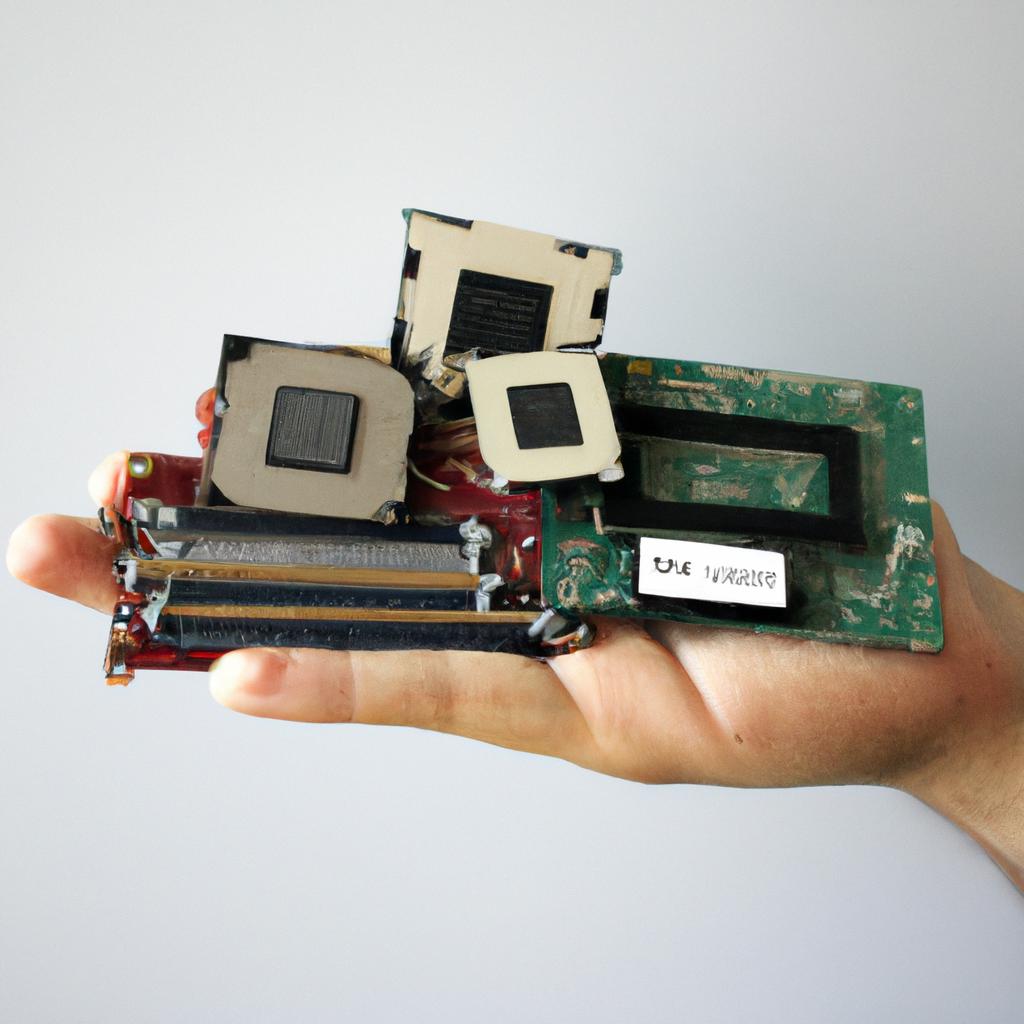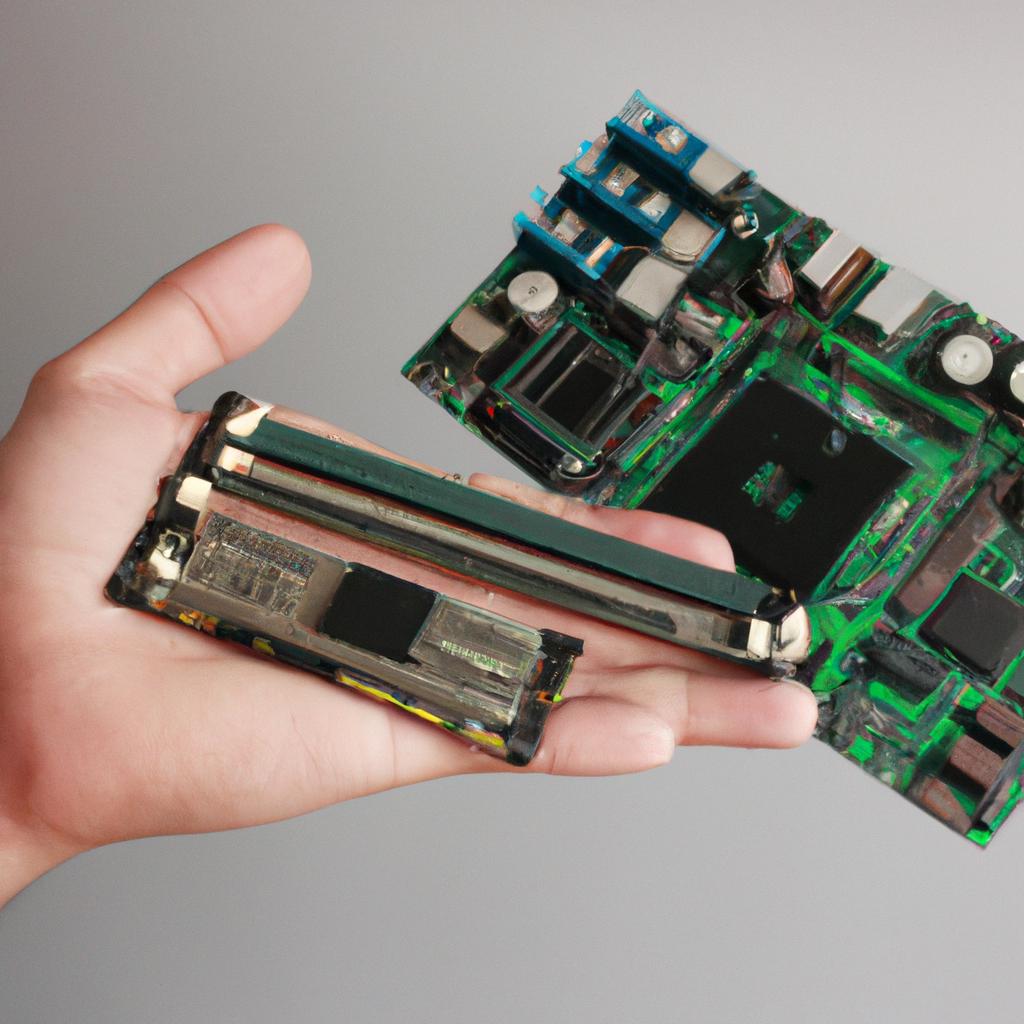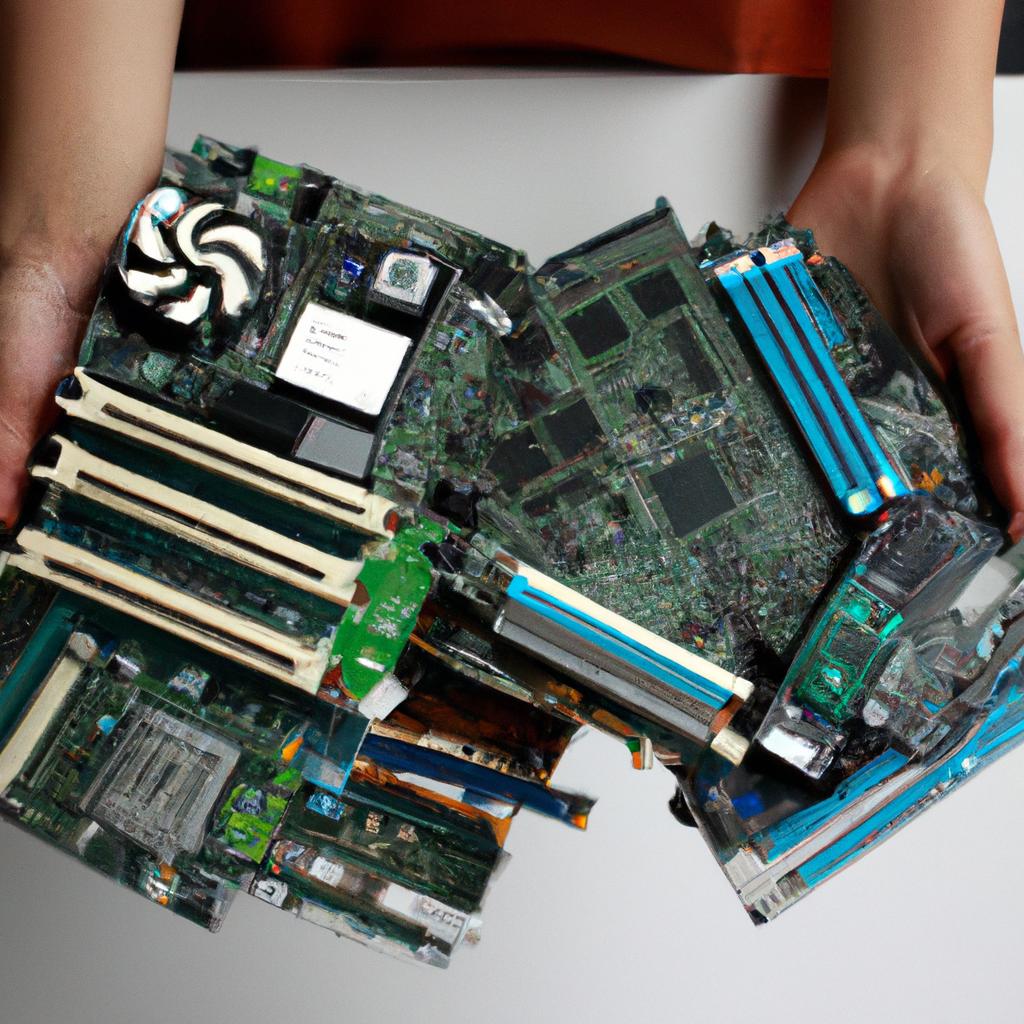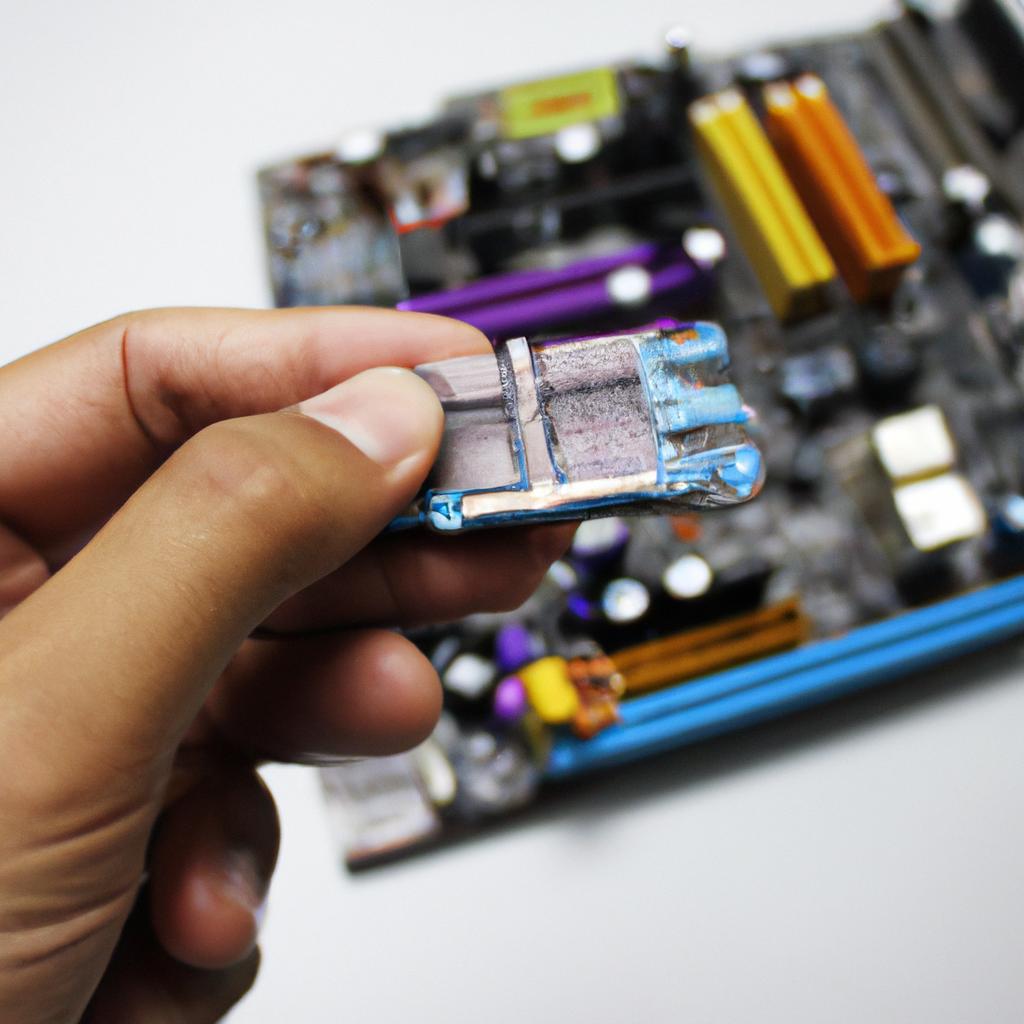The evolution of computer hardware has led to the development of various socket types, each designed to accommodate different processors and enhance system performance. One such socket type is Socket AM2+, which belongs to the AMD platform. This article aims to provide an in-depth exploration of the compatibility aspects associated with Socket AM2+ and its ability to support a wide range of processors.
To illustrate this, let us consider the hypothetical case study of a computer enthusiast who wishes to upgrade their existing system by replacing their current processor with a more powerful one. In order to ensure a seamless transition, it becomes crucial for them to understand the concept of socket compatibility and identify whether or not their chosen processor will be compatible with Socket AM2+. By examining the characteristics and specifications of both the processor and socket, they can make an informed decision about the feasibility of the upgrade while optimizing their system’s performance capabilities.
Socket Types
Socket AM2+: AMD Platform Socket Compatibility
The compatibility of socket types in computer hardware is a crucial aspect to consider when building or upgrading a system. In the case of AMD processors, one widely used socket type is Socket AM2+, which offers support for various processor models. Understanding the compatibility and features of this socket can help users make informed decisions regarding their computing needs.
To illustrate the importance of socket compatibility, let us consider a hypothetical scenario where a user wants to upgrade their existing system with an AMD processor. The current motherboard supports only older generation processors, but the user desires improved performance and enhanced features offered by newer ones. In such a situation, changing the motherboard might be necessary to accommodate the desired processor model with a compatible socket.
When discussing socket compatibility for AMD platforms, it is essential to delve into specific details that differentiate each variant. For instance, Socket AM2+ provides backward-compatible support for previous-generation AM2 processors while also offering certain advantages over its predecessor. These enhancements include increased HyperTransport speed and power management capabilities, resulting in better overall performance and energy efficiency.
To evoke an emotional response from readers about the benefits of using Socket AM2+, we highlight some key points:
- Enhanced Performance: Socket AM2+ enables faster data transfer between components through its higher HyperTransport speed. This feature facilitates smoother multitasking experiences and more efficient utilization of system resources.
- Improved Power Management: With advanced power management features, Socket AM2+ allows for better control over energy consumption. This not only contributes to reduced operating costs but also promotes environmental sustainability.
- Future-Proofing: By choosing a motherboard with Socket AM2+, users gain access to future processor upgrades within the same platform architecture. This scalability ensures longevity and potential savings on future upgrades.
- Broad Processor Support: The versatility of Socket AM2+ makes it compatible with various AMD processors across different price ranges and performance levels. Users have flexibility in selecting CPUs that suit their specific requirements.
To further assist users in understanding the compatibility, a table summarizing the supported processors and their key specifications can be found below:
| Socket | Processor Models Supported | HyperTransport Speed (MHz) | L2 Cache Size |
|---|---|---|---|
| AM2+ | AMD Phenom II X4/X3 | 2000 | Up to 6MB |
| AMD Athlon X2/X4 | 1800/2000 | Up to 2MB | |
| AMD Sempron | 800 | Up to 1MB |
In conclusion, socket compatibility is a critical factor when considering processor upgrades. Socket AM2+ offers improved performance, power management capabilities, and broad processor support compared to previous generation sockets. By selecting motherboards with this socket type, users gain access to various benefits while ensuring future scalability. In the subsequent section, we will delve into more details about the specifics of the AM2 socket architecture.
AM2 Socket
Transition from Previous Section:
Building upon the discussion of socket types, we now delve into the compatibility of the Socket AM2+ within the broader context of AMD platforms. To illustrate this, let us consider a hypothetical scenario where an individual intends to upgrade their existing system by replacing its processor with a more powerful one.
Socket AM2+ Compatibility and Considerations
When it comes to upgrading processors on an AMD platform, socket compatibility plays a crucial role. The Socket AM2+, introduced in 2007 as an evolutionary successor to Socket AM2, supports both older and newer generations of processors. This backward compatibility allows users to leverage improved performance without being restricted by outdated hardware specifications.
To gain a better understanding of how compatible different processors are with the Socket AM2+, here is a concise bullet point list outlining key considerations:
- Processor Types: The Socket AM2+ primarily accommodates Phenom X3/X4 and Athlon X2/X3/X4 processors.
- Memory Support: DDR2 memory modules are commonly used in conjunction with the Socket AM2+. However, certain motherboards associated with this socket also support DDR3 memory modules.
- Power Consumption: It is essential to ensure that any new processor selected for installation aligns with the power supply capabilities of the motherboard supporting Socket AM2+.
- Chipset Limitations: While most modern chipsets have built-in support for Socket AM2+, some older models may require BIOS updates or specific configurations for optimal functionality.
For a comprehensive overview of various processor models and their specific compatibility with the Socket AM2+, consult Table 1 below:
| Processor Model | Maximum TDP (Watts) | Supported Memory Type | Chipset Requirement |
|---|---|---|---|
| AMD Phenom II X4 955 Black Edition | 125 | DDR2/DDR3 | AMD 790FX |
| AMD Athlon II X4 640 | 95 | DDR3 | AMD 880G |
| AMD Phenom X3 8650 Triple-Core | 95 | DDR2 | NVIDIA GeForce®8200 |
Transition to Next Section:
Understanding the compatibility of Socket AM2+ is crucial, but it is also essential for users to explore other available options. Consequently, we now shift our focus toward the AM3 socket and its associated features.
AM3 Socket
AM2 Socket: Compatibility and Limitations
To illustrate the compatibility of the AM2 socket, let’s consider a hypothetical scenario where an individual is looking to upgrade their existing system. They currently have a motherboard with an AM2 socket and are considering replacing their outdated AMD Athlon X2 processor with a newer one that utilizes the same socket.
When it comes to socket compatibility, there are several factors to keep in mind. Here are some key points:
- Processor Support: The AM2 socket was primarily designed for processors based on the DDR2 memory technology. Processors compatible with this socket include the AMD Athlon 64, Athlon 64 FX, and Athlon 64 X2 series. It is important to note that processors utilizing other technologies such as DDR3 or DDR4 will not be compatible with the AM2 socket.
- Upgrade options limited by compatibility
- Consider both processor and memory technology when upgrading
- Research specific model requirements before purchasing
- Consult manufacturer documentation for detailed information
Table (markdown format):
| Processor | Memory Technology Supported |
|---|---|
| AMD Athlon 64 | DDR2 |
| AMD Athlon 64 FX | DDR2 |
| AMD Athlon 64 X2 | DDR2 |
Although the AM2 socket offers support for multiple processor models within its designated range, it does come with certain limitations. For instance, newer generations of processors may require additional features or capabilities that might not be supported by motherboards using the AM2 socket. Therefore, it is crucial to research specific requirements for each desired processor model before making a purchase.
In summary, while the AM2 socket provides compatibility with various processors, its functionality is tied closely to older memory technologies like DDR2. Upgrading your system requires careful consideration of both processor and memory technology specifications to ensure smooth installation and optimal performance.
Moving forward, let’s explore the AM3+ socket and its compatibility with different processor models.
AM3+ Socket
Continuing with the evolution of AMD platforms, we now shift our focus to the AM3+ socket. This socket was introduced as an upgrade over its predecessor, offering enhanced performance and compatibility for users seeking a more powerful computing experience.
AM3+ Socket: Enhanced Performance and Compatibility
To illustrate the advantages of the AM3+ socket, let’s consider a hypothetical case study involving a gaming enthusiast named Alex. Being passionate about high-performance gaming, Alex decides to upgrade their existing system by replacing their outdated processor with a more advanced one compatible with the AM3+ socket. By making this switch, Alex experiences significant improvements in overall processing power and efficiency, enabling them to enjoy smoother gameplay and handle resource-intensive tasks effortlessly.
The introduction of the AM3+ socket brought several key enhancements compared to its predecessors. Here are some notable features:
- Increased CPU core count support
- Higher memory bandwidth capabilities
- Improved power delivery options
- Enhanced overclocking potential
These advancements allow users like Alex to harness greater processing power while maintaining stability and reliability during demanding computing tasks. The following table provides a summary comparison between various AMD sockets:
| Socket | Core Count Support | Memory Bandwidth | Power Delivery Options | Overclocking Potential |
|---|---|---|---|---|
| AM2+ | Up to 4 cores | DDR2 | Limited | Moderate |
| AM3 | Up to 6 cores | DDR3 | Advanced | High |
| AM3+ | Up to 8 cores | DDR3 | Advanced | High |
This table emphasizes how each iteration of the AMD platform has gradually evolved to accommodate higher core counts, improved memory bandwidths, more sophisticated power delivery options, and increased overclocking potential.
With these advancements in mind, it is evident that the AM3+ socket represents a significant step forward in AMD’s platform development. However, to fully comprehend the complete picture of compatibility options, we will now delve into the next section about the AM4 socket and its distinctive features.
Transition to Next Section H2: AM4 Socket
As we explore further advancements in AMD’s platform sockets, let us now turn our attention toward the AM4 socket. This iteration builds upon previous improvements while introducing new elements designed to meet the needs of modern computing technologies.
AM4 Socket
To better understand the evolution of AMD platform socket compatibility, let’s consider an example. Imagine a computer enthusiast named John who is looking to upgrade his gaming rig. He currently has an AM2+ socket motherboard and wants to know if he can use the newer AM3+ processors on his existing setup.
The AM3+ socket was introduced by AMD in 2011 as an improvement over its predecessor, the AM3 socket. It featured enhanced power management capabilities and support for higher memory speeds. One notable advantage of the AM3+ socket was backward compatibility with older generation processors that used the previous socket types.
When considering whether John could use an AM3+ processor on his AM2+ motherboard, there are several factors to take into account:
- Physical Compatibility: The physical design of the sockets differs between AM2+ and AM3+, making it physically impossible to directly install an AM3+ CPU onto an AM2+ motherboard without modification.
- Power Requirements: The power delivery system on an AM2+ motherboard may not be able to provide adequate power for high-performance AM3+ processors. This could result in stability issues or even damage to the components.
- BIOS Support: Even if physical modifications were made and power requirements met, another potential hurdle is BIOS support. Older motherboards may lack the necessary BIOS updates needed to recognize and properly utilize AM3+ CPUs.
Considering these factors, it becomes clear that while some level of compatibility exists between different generations of sockets, attempting such a cross-generation upgrade would likely lead to significant challenges or outright incompatibility.
Here is a table summarizing the key differences between the two sockets:
| Feature | AM2+ Socket |
Socket Compatibility
Continuing from our discussion on the AM4 socket, let us now explore the compatibility of another notable socket: Socket AM2+. To illustrate its relevance and practicality, consider a hypothetical scenario where an individual is building their own gaming PC. They have chosen an older but still capable AMD processor that requires the AM2+ socket for installation.
Socket AM2+, introduced by Advanced Micro Devices (AMD) in 2006, was designed to accommodate processors based on the company’s K10 microarchitecture. This socket offered backward compatibility with its predecessor, Socket AM2, allowing users to upgrade their systems while retaining certain components such as memory modules or cooling solutions. However, it should be noted that not all AM2 processors were compatible with the later AM2+ sockets due to differences in power requirements and signaling protocols.
When considering compatibility options for Socket AM2+, there are several key factors to keep in mind:
- Processor Support: Socket AM2+ was primarily intended for use with AMD Phenom series processors, including Phenom X3, X4, and Athlon X2 models. It provided support for both dual-core and quad-core CPUs.
- Memory Compatibility: Depending on the motherboard chipset used in conjunction with Socket AM2+, different types of memory may be supported. Some chipsets only work with DDR2 RAM modules, whereas others can also handle DDR3 memory.
- Power Requirements: The power delivery system of a motherboard plays a crucial role in ensuring stable performance. When selecting a motherboard compatible with Socket AM2+, it is essential to check if it meets the specific power requirements of your chosen CPU.
- Expansion Slots and Features: Different motherboards employing this socket offer varying expansion slot configurations and additional features like USB ports or audio connectors. Be sure to choose one that suits your needs regarding connectivity and future upgrades.
To further emphasize these considerations visually, below is a table highlighting the compatibility features and limitations of Socket AM2+:
| Feature | Compatibility |
|---|---|
| Processor Support | AMD Phenom series |
| Memory Types | DDR2, some support for DDR3 |
| Power Requirements | Varies depending on CPU |
| Expansion Slots | Varies depending on motherboard |
By understanding the nuances of Socket AM2+ compatibility, users can make informed decisions when selecting components for their system. This ensures a smooth assembly process and optimal performance in line with their intended usage.
Please let me know if there is anything else I can assist you with!




